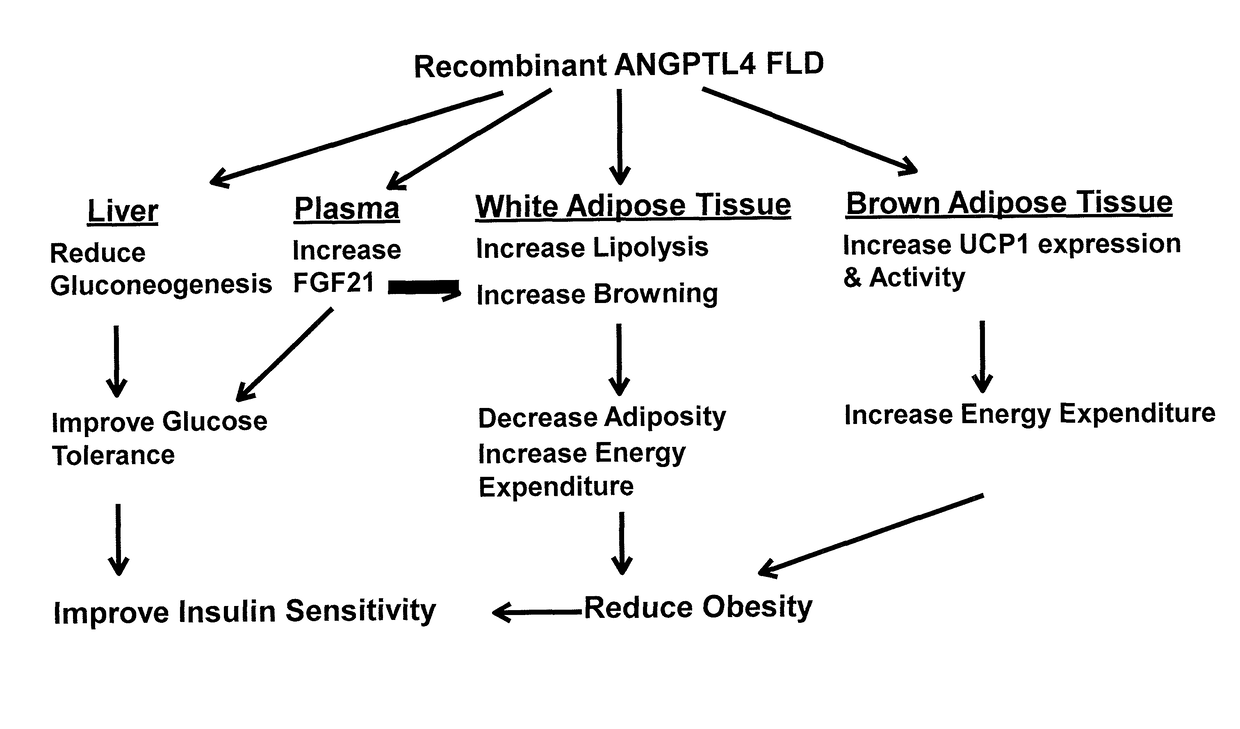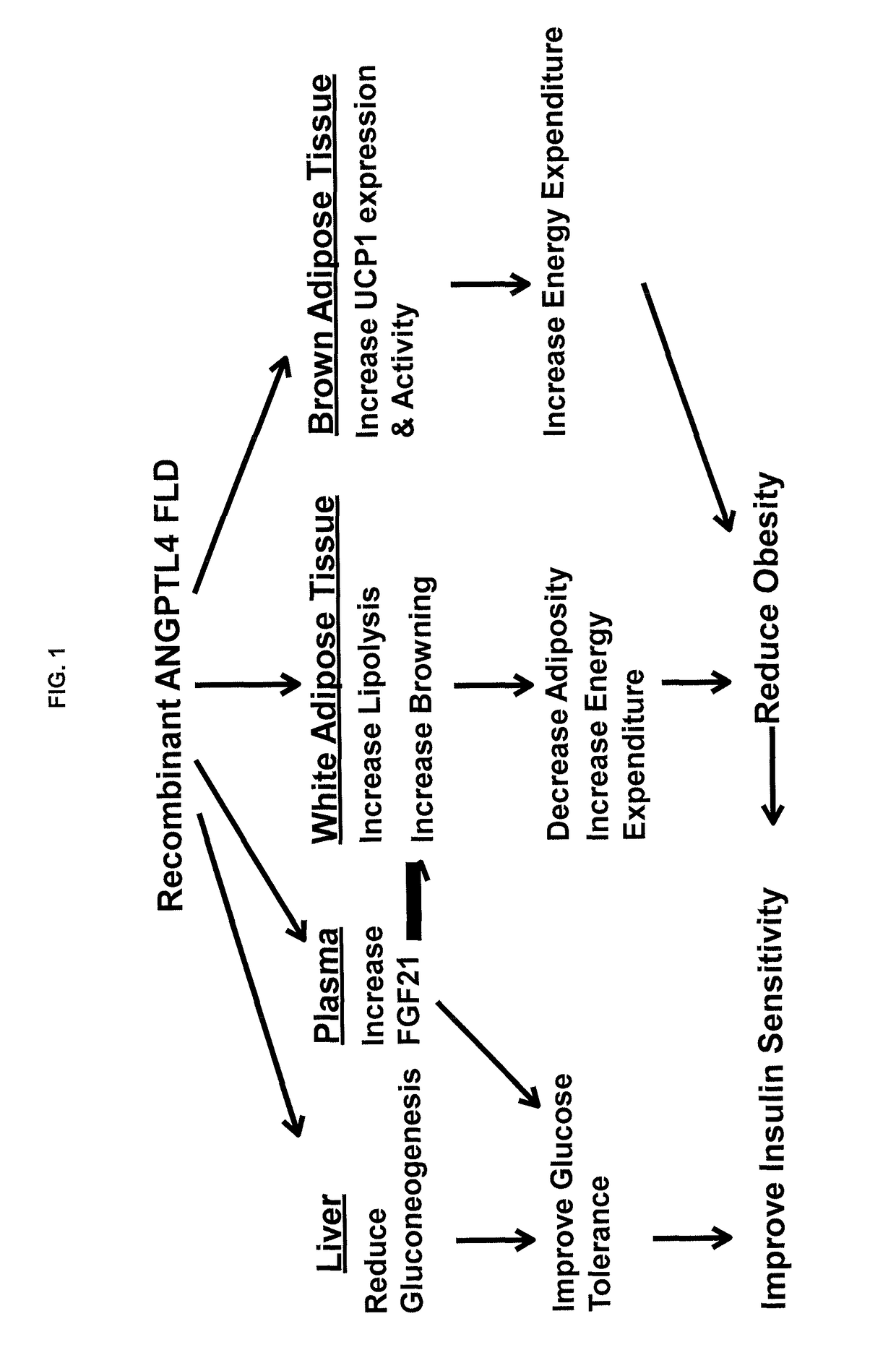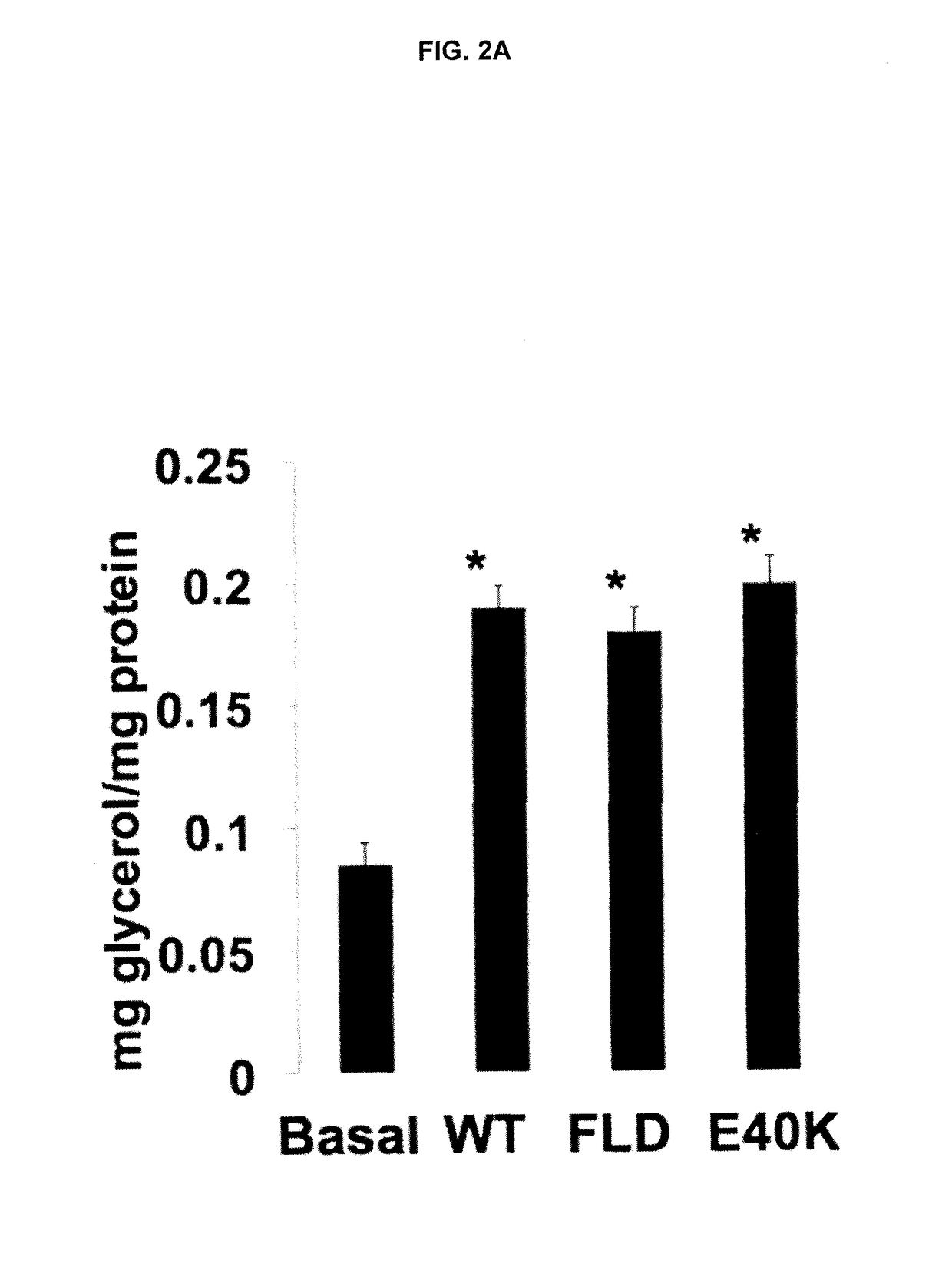Anti-obesity and Anti-diabetic effects of angiopoietin-like 4 (angptl4) fibrinogen-like domain
- Summary
- Abstract
- Description
- Claims
- Application Information
AI Technical Summary
Benefits of technology
Problems solved by technology
Method used
Image
Examples
example 1
[0197]FLD Induces Lipolysis and cAMP Levels in Mouse Primary Adipocytes
[0198]To test whether the LPL inhibitory effect of ANGPTL4 is required for its induction of lipolysis, we generated two ANGPTL4 mutants. An adenoviral vector expressing flag-tagged full length human ANGPTL4 (ANGPTL4) was provided from the laboratory of Ron Kahn (Joslin Diabetes Center). We then conducted site-directed mutagenesis to alter amino acid 40 from glutamic acid to lysine (E40K), which diminishes the LPL inhibitory activity of ANGPTL4 (18; 19; 39). We also performed a deletion to excise nucleotides encoding amino acid 38-165 of human ANGPTL4. This mutant (called as FLD), thus, lacked CCD. The first 37 amino acids were not deleted, as they contain signal peptide that allows FLD to be secreted. Adenoviruses expressing E40K, FLD, or ANGPTL4 (WT) were generated following manufacture's manual (AdEasy, Agilent). 293T cells were infected with these adenoviruses for 2-3 days, and E40K, FLD, or ANGPTL4 proteins w...
example 2
Increasing Plasma FLD Levels Protected Mice From Diet-Induced Obesity
[0201]C57BL / 6 mice were infected with adenovirus expressing FLD, ANGPTL4, or LacZ (control) and placed under high-fat diet (42% fat, Harlan Lab) for 3 weeks. A three-week time period was chosen, because adenoviral expression usually lasts 3-4 weeks. After 3 weeks, the expression of FLD and ANGPTL4 in plasma of adenovirus-infected mice was confirmed by immunoblots using flag antibody (FIG. 3). Because most ANGPTL4 produced in liver was processed to shorter forms, flag-tagged proteins detected in plasma of ANGPTL4- and FLD-expressing mice had similar molecular weight (FIG. 3). This phenomenon was reported from our and other laboratories (14-16). As Flag-tag was located at C-terminus, proteins detected in plasma of ANGPTL4-expressing mice were FLD. But N-terminal CCD should also be in circulation of these mice. Flag-tagged protein expression was lower in ANGPTL4-expressing mice. We will use higher titers of ANGPTL4-ex...
example 3
The Expression of Fatty Acid Oxidative Genes was Increased in FLD-Overexpressing Mice
[0204]As tissue weight of iWAT, eWAT and BAT decreased markedly by FLD-induced lipolysis, FA generated from this process may be mobilized to other tissues. However, we found that TG levels in liver and gastrocnemius muscle were lower in mice overexpressing ANGPTL4 and FLD (FIG. 9A and FIG. 9B). Plasma NEFA levels were similar in LacZ-, FLD-, and ANGPTL4-expressing mice (data not shown). We reasoned that FA generated from lipolysis could be oxidized in WAT, liver, or skeletal muscle. We therefore examined the expression of fatty acid oxidative genes: very long chain acyl-coeznyme A dehydrogenase (Vlcad), medium chain acyl-coeznyme A dehydrogenase (Mcad), and acyl-coenzyme A oxidase 1 (Acoxl) in various tissues. These three genes were induced in almost all tissues tested in FLD-overexpressing mice (FIG. 10). In ANGPTL4-overexpressing mice, the expression of Mcad and Vlcad were increased in iWAT and li...
PUM
| Property | Measurement | Unit |
|---|---|---|
| Fraction | aaaaa | aaaaa |
| Composition | aaaaa | aaaaa |
| Level | aaaaa | aaaaa |
Abstract
Description
Claims
Application Information
 Login to View More
Login to View More - R&D Engineer
- R&D Manager
- IP Professional
- Industry Leading Data Capabilities
- Powerful AI technology
- Patent DNA Extraction
Browse by: Latest US Patents, China's latest patents, Technical Efficacy Thesaurus, Application Domain, Technology Topic, Popular Technical Reports.
© 2024 PatSnap. All rights reserved.Legal|Privacy policy|Modern Slavery Act Transparency Statement|Sitemap|About US| Contact US: help@patsnap.com










